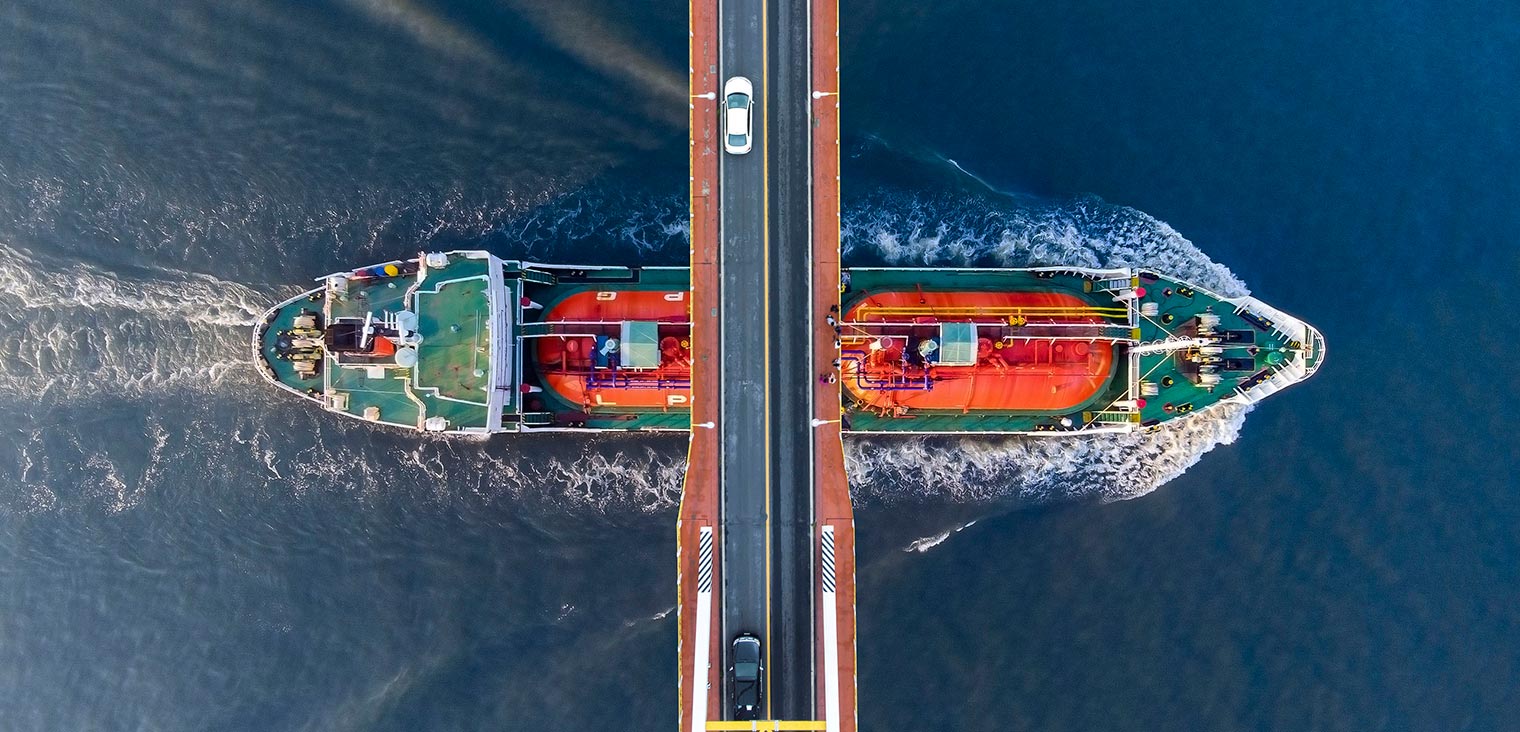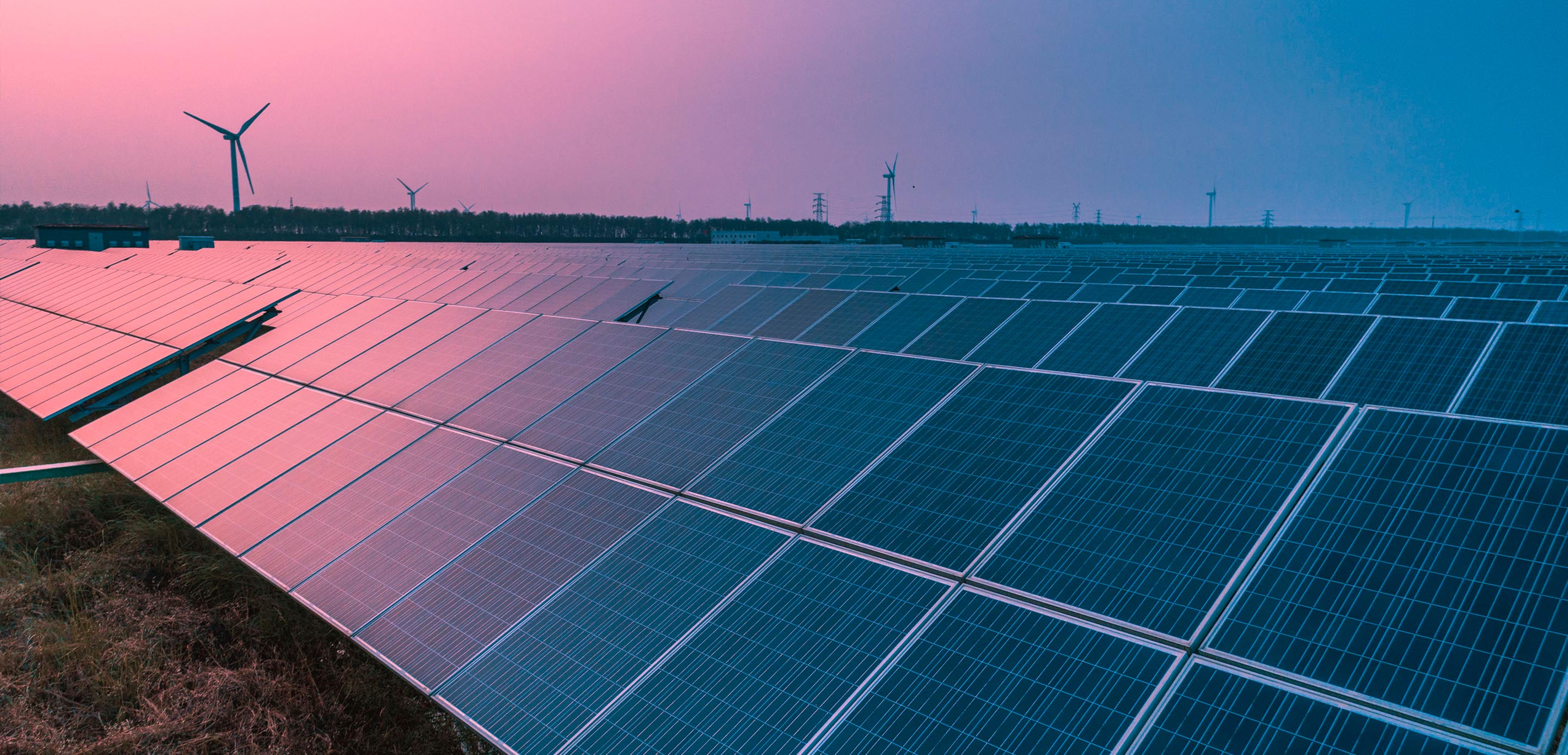- Article

- Infrastructure and Sustainable Finance
- Sustainable Supply Chain
- Supply chain
- Transition to Net Zero
Why sustainability is integral to future-proof supply chains
After pledging to set up a global fund to compensate less-developed countries for loss and damage caused by climate change at the COP27 United Nations Climate Summit in November, parties to the UN Biodiversity Conference (COP15) agreed a month later that businesses must assess and report their dependence on biodiversity, as part of a wider package aimed at protecting 30% of the planet’s land and oceans by 2030.
Both sent a clear message that polluters must account for the damage they do to the environment and aim to support a 1.5 degree pathway, but it’s worth remembering the 1.5 degrees is not a target, but a tipping point. It’s where life-supporting systems really start to fail, where ice-sheet melting becomes irreversible and the loss of habitable land leads to over one billion people displaced.
As others have reiterated, the planet remains on life-support and in the face of the challenges, we, collectively, need to bridge the gap between promises and reality.
While climate rightly has taken centre stage, the more we look, the more we see the issues facing people and planet are all inter-related; we can’t act in isolation.
We’re witnessing rising inequality made worse by the pandemic and geopolitics1, species dying out at a rate not seen since the last mass extinction; and we’re using 60% more of the earth’s resources than it can regenerate every year. This is just not sustainable and will ultimately lead to system collapse.
The two UN summits covered many other important areas, but clearly highlight that governments are applying a global lens to the twin crises of climate change and diversity loss. As this approach feeds through to regulations, companies can expect to be held accountable for the environmental impact of their entire value chain. Everywhere.
Our challenge is that while we can control what our own organisations can achieve – it’s in the supply chain that the battle for climate, nature and other sustainability issues will be won or lost.
The supply chain challenge
That is an enormous challenge. According to the Carbon Disclosure Project (CDP), greenhouse gas emissions in a company’s supply chain are, on average, 11.4 times higher than its operational emissions2. When large corporates focus on these scope 3 emissions, many small- and medium-sized enterprises (SMEs) may find that they suddenly no longer comply with their buyers’ requirements – or those of their buyers’ buyers.
Smaller firms lack the data, resources and know-how of their larger peers, but their funding requirements may be just as extensive. Research by HSBC and Boston Consulting Group revealed that up to half of the estimated US$100-150 trillion needed to deliver net-zero supply chains by 2050 would need to be directed to SMEs.
A multi-pronged approach will be necessary to meet this challenge, centring on three areas: data, technology and purposeful collaboration.
Measuring and managing
Gathering data from deep within the tiers of any company’s supply chain is difficult. And for SME suppliers, dealing with multiple buyers with different data requirements can pose a considerable burden.
Companies need to determine what to measure, whether they can trust the data, and how best to capture and interpret it. They also need to establish appropriate benchmarks and figure out how to ensure ongoing compliance.
This is further complicated by the existence of multiple standards and frameworks. Even where there are agreed-upon standards, there is no guarantee that what is good today will still be good tomorrow.
Thankfully, progress is emerging in some of these areas. Part of the working group, HSBC is helping the International Chamber of Commerce (ICC) roll out a new global framework for sustainable trade standards as launched at COP273.The International Sustainability Standards Board is making headway on harmonising reporting and disclosure standards. Bodies such as the Partnership for Carbon Accounting Financials and the International Capital Market Association have developed useful benchmarks.
Purposeful collaboration
Large corporates, their suppliers and vendors will need to work together to reduce the environmental impact of global value chains or risk losing out to lower-carbon competitors.
Big changes will need to happen very quickly, affecting the largest firms first. But, as they pivot to comply, the shocks will course through the arteries of global trade and hit suppliers – and in particular SMEs. In turn, they’re going to need to support their buyers to conform to and report against the tougher ESG metrics. And if they fail to do so, they face exclusion from global value chains.
We’re seeing already how procurement is being used to this end: suppliers are waking up one day and finding they no longer comply with their buyer’s requirements – or that of their buyer’s buyer.
Business models must be remodelled, ways of working reimagined and supply chains reconfigured.
Global supply chains today are in a period of flux. Geopolitical tensions, pandemic-induced lockdowns and high energy prices have forced many companies to rethink where their materials come from and how they deal with their suppliers.
Purposeful collaboration is critical to making that possible. It can take many forms, but one emerging trend is for sustainability leaders to use finance as a lever to drive change in their supply chains.
Finance as a lever for change
Walmart’s supply chain finance programme is a prime example. With reliable data from global non-profit CDP and financial support from HSBC, Walmart is encouraging suppliers to reduce their emissions in line with a 1.5ºC pathway.
We are also working with PVH – owner of the Tommy Hilfiger and Calvin Klein brands – on the first supply chain finance programme to their suppliers based on a set of science-based environmental targets, as well as a series of social elements, including a healthy and safe working environment, compensation and benefits, and employment issues4.
These programmes work by leveraging the buyer’s strong credit rating to offer suppliers better terms and access to finance. We see this as a win-win-win, benefiting buyers, suppliers and the planet.
Large corporates will also need to collaborate with their suppliers as they move towards circular business models and rethink product design. They can co-invest; share knowledge and resources; and propagate innovation and adoption of new technologies.
To affect a just, fair and effective transition will also require a leadership crucible of many other stakeholders. For example, governments will need to establish incentives to rebalance the economic equation; industry bodies will need to disseminate knowledge and lobby for change; and NGOs have the responsibility to establish standards and measurement indicators that emphasise and facilitate real-world change.
Global banks like HSBC have a responsibility to guide and support their clients as they reconfigure their supply chains.
Financing is a big part of it. As a bank, we have committed to provide between US$750 billion and US$1 trillion of sustainable financing and investment by 2030 to support customer transitions and a sustainable future – and we have already provided over US$210 billion towards this target (as of FY2022)5.
But beyond financing, banks play a wider role in the transition through facilitation and helping to mitigate risk. We can facilitate change through guidance, advocacy and access to tools, such as carbon calculators and ESG scoring for disclosure.
As a global trade bank with 1.4 million commercial banking customers, we are also well placed to absorb risks as an intermediary in a new trading relationship – something that will become increasingly important as firms look to trade or source more sustainably.
As businesses respond to these short-term pressures, they also have an opportunity to think about the longer-term implications of climate and biodiversity regulations. The recipe for a resilient supply chain starts with sustainability.
No transition without innovation
Lastly, the world is simply not going to reach net zero without new technologies. These range from ongoing advances in carbon capture and sequestration to the use of satellite technology to measure emissions deep in the supply chain. We must scale up clean energy infrastructure and develop low-carbon fuels, supporting businesses and supply chains.
It is worth singling out hydrogen – particularly green hydrogen - as a potential key enabler of the transition, given its ability to fuel transport and gas turbines scalable. We also expect green hydrogen to play a major role in the transition of some of the most carbon-intensive industries, including steelmaking, shipping and cement production, alongside the feedstock for the chemicals industry.
A crucial part of this will be supporting climate-tech entrepreneurs to grow the new low-carbon economy and reengineer legacy practices founded in the industrial revolution. We’re here to support these companies through partnership and by providing funding to their banking needs through the cycle, whilst helping them scale technology adoption through referrals to our clients and global network.
I saw so much of this potential at work in Sharm el-Sheikh and can’t wait to see what 2023 brings, as we work towards COP28 in the UAE.
Today we finance a number of industries that significantly contribute to greenhouse gas emissions. We have a strategy to help our customers to reduce their emissions and to reduce our own. Find out more: https://www.hsbc.com/who-we-are/our-climate-strategy
- UNDESA World Social Report 2021 | DISD
- https://www.cdp.net/en/reports/downloads/6106
- https://iccwbo.org/publication/icc-standards-for-sustainable-trade-and-sustainable-trade-finance-wave-1-framework/
- https://www.pvh.com/news/pvh-hsbc-partnership
- https://www.hsbc.com/investors/results-and-announcements/annual-report

Sustainability for businesses
Explore how we're supporting customers in their transition to net-zero.



